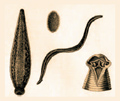The eLitMed.hu medical portal uses computer cookies for convenient operation. Detailed information can be found in the Cookie-policy.
Lege Artis Medicinae - 2008;18(05)
Content
[RETREATMENT OF CHRONIC HEPATITIS C IN PREVIOUS NONRESPONDERS]
[Only approximately 50% of patients with chronic hepatitis C virus (HCV) genotype 1, the prevailing genotype in Hungary, show a sustained virologic response (SVR) when treated with the combination of peginterferon alfa and ribavirin. The number of patients who do not respond to this treatment is continuously increasing. The appearance of increasingly efficient treatment modalities was seen in the past 15 years, but now no new drugs are expected for a few years. There is a growing need for retreatment to prevent possible progression of the disease. The best candidates for retreatment are identified based on the data of the previous treatment; the dosage of the drugs used, dose reductions and their causes, the kinetics of the virologic response, the patient’s compliance, and every correctable and non-correctable factor should be carefully analysed. When the previous treatment with peginterferon and ribavirin failed to induce response, retreatment is only recommended if correctable factors can be identified. Repeated treatment may result in sustained virologic response usually if a longer duration and/or higher dose of ribavirin is applied. Since the best possible outcome of retreatment is sustained virologic response in 10 to 30% of patients, which is significantly lower than the results achieved in naive patients, every effort has to be made to increase the efficacy of the first treatment. For patients in whom no sustained virologic response can be achieved, a maintenance therapy with low dose interferon may be considered, although its benefit is yet to be proven. New small molecules are under development, which may bring further hope for nonresponders to current standard therapy.]
[THE REAL FACE OF JUVENILE POLYPOSIS SYNDROME - MALIGNANCY IN A DISEASE PREVIOUSLY THOUGHT TO BE BENIGN]
[INTRODUCTION - The majority of colorectal cancer cases is sporadic, but familial and autosomal dominant forms should also be considered. Juvenile polyposis syndrome is an autosomal dominant condition caused by mutations in the SMAD4 or the BMPR1A gene. Typically, numerous hamartomatous polyps develop in the upper gastrointestinal and the colorectal area. In contrast to earlier opinions, some of these polyps may transform malignantly, like in the case presented here, at the age of 34-35 years on average. CASE REPORT - During the eighteen-year continuous care of the young man treated for juvenile polyposis, more than a hundred polyps were resected from the gastrointestinal tract. After an eigth-year intermission of surveillance because of insufficient compliance, the patient presented in a severe clinical condition caused by metastatic colorectal cancer. He died after a short palliative therapy at the age of 31. Based on the family tree, all of his living adult first-degree relatives were subsequently examined and juvenile polyposis syndrome was also diagnosed in his older brother. Genetic testing revealed a mutation in the BMPR1A gene in the clinically affected brother, one of his daughters, and also in the deceased proband's child. CONCLUSION - Genetic testing made it possible to relieve the mutation-free relatives of the anxiety and particularly of a number of unnecessary, mainly invasive examinations, while mutation carriers can be given the best possible clinical surveillance.]
1.
Clinical Neuroscience
Is there any difference in mortality rates of atrial fibrillation detected before or after ischemic stroke?2.
Clinical Neuroscience
Factors influencing the level of stigma in Parkinson’s disease in western Turkey3.
Clinical Neuroscience
Neuropathic pain and mood disorders in earthquake survivors with peripheral nerve injuries4.
Journal of Nursing Theory and Practice
[Correlations of Sarcopenia, Frailty, Falls and Social Isolation – A Literature Review in the Light of Swedish Statistics]5.
Clinical Neuroscience
[Comparison of pain intensity measurements among patients with low-back pain]1.
Clinical Neuroscience Proceedings
[A Magyar Stroke Társaság XVIII. Kongresszusa és a Magyar Neuroszonológiai Társaság XV. Konferenciája. Absztraktfüzet]2.
3.
Journal of Nursing Theory and Practice
[A selection of the entries submitted to the literary contest "Honorable mission: the joys and challenges of our profession" ]4.
Journal of Nursing Theory and Practice
[End of Life and Palliative Care of Newborns in the Nursing Context]5.
Journal of Nursing Theory and Practice
[Aspects of Occupational Health Nursing for Incurable Patients ]

























